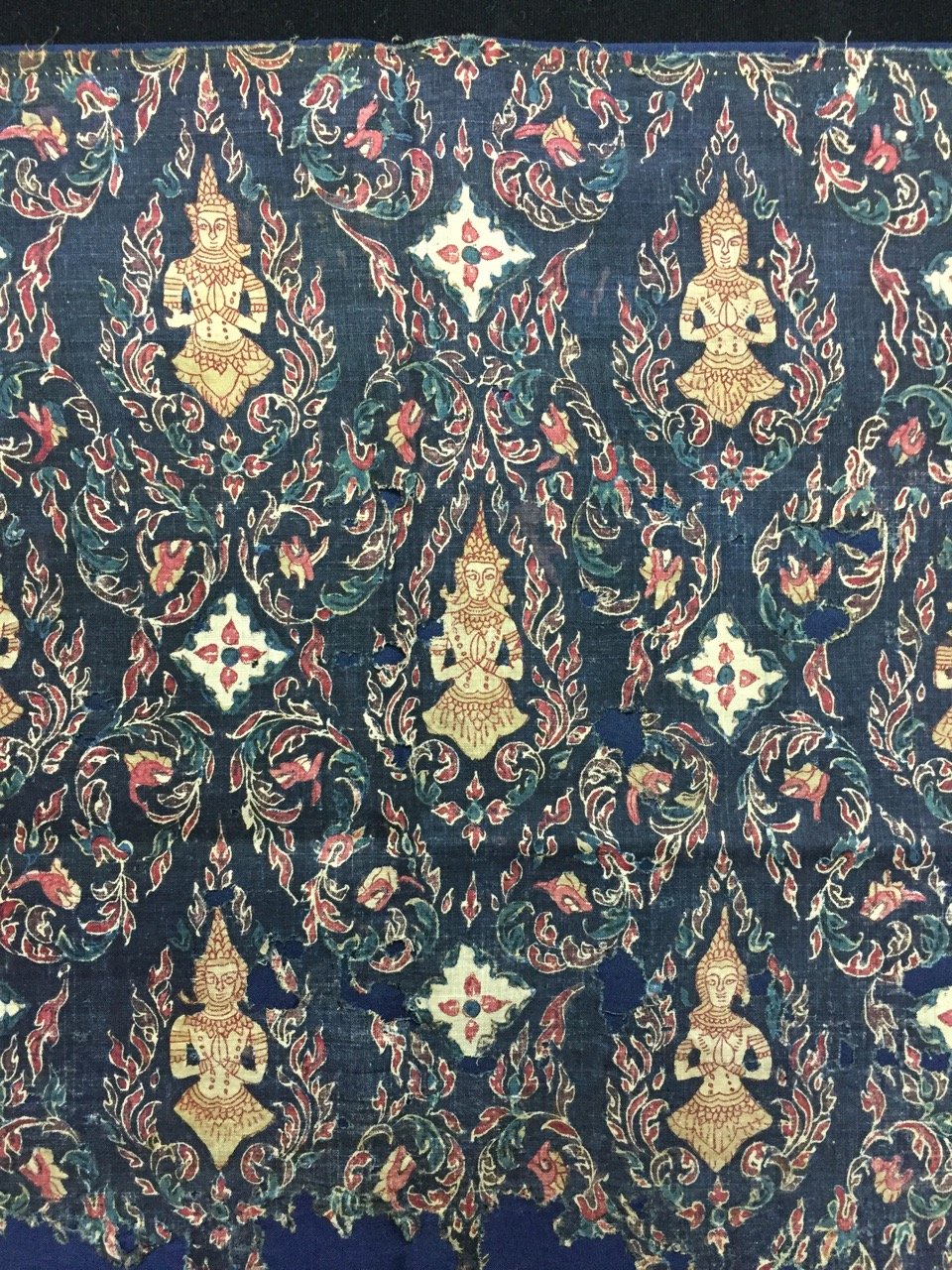
Upcoming and past
Events
Paris-based collector and former resident of Thailand, Louis-Sébastien Ohl, will share with us his appreciation of traditional textiles from Isaan, and why in his opinion its widely diverse people have produced, and still do, some of the most attractive, happy-looking textiles of Thailand. Isaan people have brought to life their beliefs and traditions in delicate, harmonious patterns woven in the complex mudmee (weft ikat) in fine silk or cotton, and are a unique legacy to the women who wove them.
For Louis-Sébastien, the strong graphic dimension of the textiles’ designs, enhanced by the complex and intricate mudmee technique, is what he finds pleases the mind. Patterns are almost abstract or in stylized shapes, inspired by the people’s environment, whether nature around them or animals. Colors are generally lively and at times deeply saturated. The high-quality locally produced home-spun silk generates a beautiful sheen.
Through some 40 selected antique and vintage traditional pieces, and a few contemporary creations from his collection, he will share with us why he believes that most village textiles from this region haven’t yet earned the status level of recognition they deserve among world and Thailand-based collectors.
The presentation will include scores of personal photographic materials, many taken in situ during Louis-Sébastien’s visits to local villages and manufactures. The talk aims at taking a fresher look at the beauty and diversity of Isaan textiles, particularly in silk.
We are excited to invite you to our Collectors' Bazaar on Saturday 13th December.
There will be stalls that were popular last year, and new ones with a wide range of
goods for you to browse through. These include unique treasures, vintage and
beautifully crafted textiles, and many attractive items for textile lovers.
#thaitextile #thaitextilesociety #antiquetextiles #asiantextiles
Celebrating its 20th year, Quilts for Kids Nepal is a non-profit organization based in Kathmandu, Nepal, providing work for economically challenged women and educating at-risk children in a slum village in Kathmandu. Founder and Director James Hopkins will talk about how the organization got started, and how the extraordinary quilting skills of this underserved community are harnessed in order to educate, empower and transform the girls and young women living there. Master Quilt Maker Karma Kaur, who will join James from Nepal, will demonstrate some of her extraordinary quilting work, and will talk about how the women of the community have designed and created their own unique and very beautiful quits.
James Hopkins studied economics and accounting at Duke University in the US and worked for more than 20 years as an investment broker at UBS Financial Services in New York and Washington DC, specializing in socially-responsible investments. In 2004 he retired and moved to Nepal to study Buddhist philosophy & Himalayan languages at a Tibetan monastery in Kathmandu. He has written four poetry books, and is the author of a photographic journey in Kathmandu. In 2006 he founded Quilts for Kids Nepal that helps preserve a centuries-old tradition of hand-stitching colorful bed covers, and now creates full-time work for 20 women and sponsors the education of more than 70 at-risk children in Nepal, India, and the United States.



